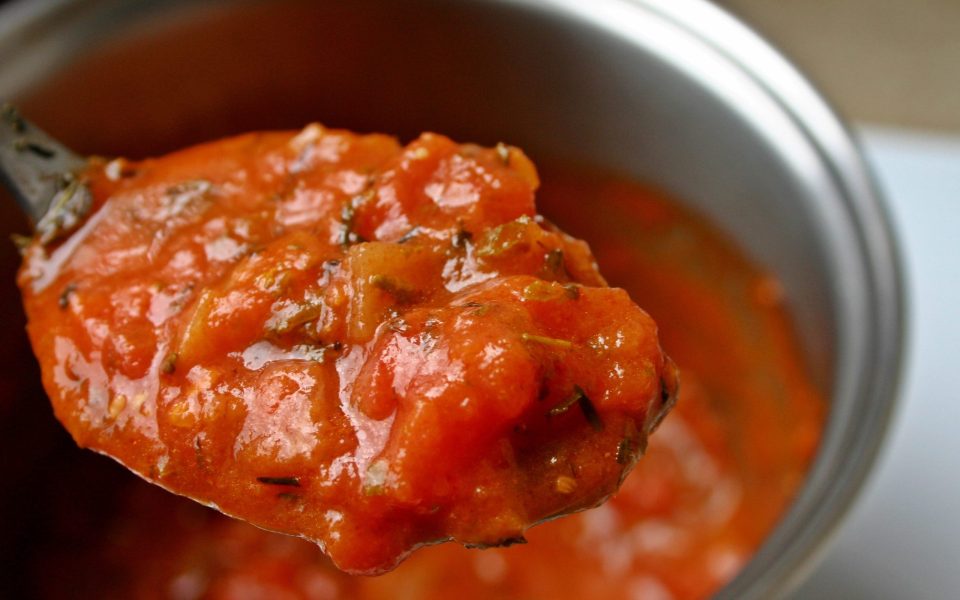 Even though some of my friends are indeed salty, sodium is definitely not my friend. And though the search for ways to curb my sodium intake gets tricky, it can also be fun if I’m doing it right. When my family and I cook at home, we find that making our own dressings and sauces, as well as spice and herbal blends can be rewarding, they contain less sodium (usually) and, most importantly, they taste better.
Even though some of my friends are indeed salty, sodium is definitely not my friend. And though the search for ways to curb my sodium intake gets tricky, it can also be fun if I’m doing it right. When my family and I cook at home, we find that making our own dressings and sauces, as well as spice and herbal blends can be rewarding, they contain less sodium (usually) and, most importantly, they taste better.
Why is that? Because we control what goes in it. We get to pick our flavor profile. We can define the consistency. We control all aspects of the nutritional value and flavors that go into our very own product.
I love spaghetti sauce. In most major brands of spaghetti sauce, 400-480mg of sodium lurk in every half-cup. That’s 20 percent of the recommended daily allowance.
I am a “sauce guy.” Half a cup? That’s just enough to make me mad. I mean, does anyone really like the taste of plain spaghetti? I don’t.
I did research on how to get around that 20 percent of our daily sodium intake while making something with more flavor and maintain control of the ingredient list.[pullquote]I am a “sauce guy.” Half a cup? That’s just enough to make me mad. [/pullquote]
Without digging too far into a recipe, I will peel and hand-crush or blend fresh tomatoes with a food processor. Canned crushed tomatoes themselves can contain upwards of 400mg of sodium. If I want it more tomato-y, then this is the way to go. Nothing store-bought tastes as fresh as actual fresh tomatoes. I also recommend using no-salt added or low-sodium tomato paste and do the same with beef or chicken broth or stock. To get my salty flavor profile up in these cases, I double down on the oregano, thyme or basil. And what about the special “three-cheese blends”? Well, I can throw my own three cheeses in there. I must be mindful, however, that cheese is made with salt and all cheese will raise the sodium level in my sauce.
When finished, there should be a rich bold sauce to feel good about. A work of culinary art, and I know that the sodium levels are lower, even with the cheese.
An entire batch of my spaghetti sauce has around 275 mg of sodium. If I stick with the half-cup measurement —which I won’t — I’m bringing my sodium value to around 60 mg. This is a major reduction in sodium and most likely an increase in flavor.
As I have written before, there is no escaping sodium. It is in almost everything we eat. A medium onion has 4 mg of sodium. A cup of chopped tomatoes is around 9 mg. Sodium is everywhere. We need sodium. And if you’re someone who sweats excessively, like myself, like an athlete, someone who works outside in the heat or anyone who exerts themselves, sodium is a necessity. However, couch potatoes should not up sodium intake to match that of the athletes of the world. It is up to us, as consumers of our own food, to monitor our intake of it.
Substituting homemade basic sauces, spice and herbal blends, and dressings can be tedious. It may be easier to just pick up that jar of mass-produced spaghetti sauce on the way home from work than to slave over a sauce before slaving over dinner. That’s understandable. Make it fun. Make it ahead. Can it, freeze it, store it. It will be there when I need it. But, more importantly, my body will be there when I need it.
Join the First Amendment Society, a membership that goes directly to funding TCB‘s newsroom.
We believe that reporting can save the world.
The TCB First Amendment Society recognizes the vital role of a free, unfettered press with a bundling of local experiences designed to build community, and unique engagements with our newsroom that will help you understand, and shape, local journalism’s critical role in uplifting the people in our cities.
All revenue goes directly into the newsroom as reporters’ salaries and freelance commissions.


Leave a Reply